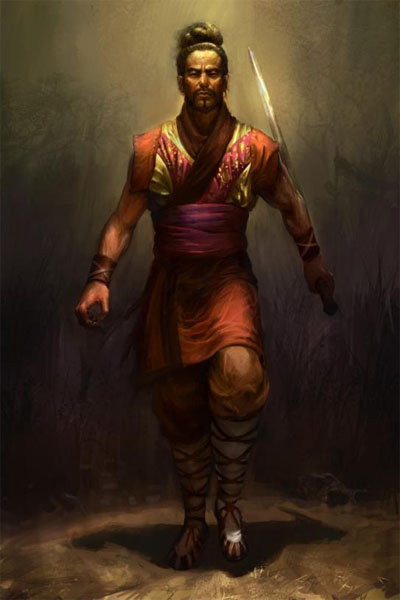Deadliest Warrior Legends: Sun Tzu
Deadliest Warrior: Legends Quick Facts:
- Sun Tzu was born to a lesser noble family who earned his reputation as a mercenary. After publishing The Art of War he gained the attention of the king of Wu who invited him to court.
- The king asked if Sun could train anyone, even concubines. Sun said he could. When the women refused to obey his commands he had their leaders beheaded. After that, all of them performed flawlessly.
- Sun believed that it was his right as a commander to enforce his leadership by any means. However, he valued the bloodless victory over all else- the use of knowledge was more important than force.
- Sun Tzu’s treatise, The Art of War, put emphasis on using terrain, spies, deception and breaking the enemy’s spirit so he has no will to fight. Keeping the enemy in a state of chaos was victory.
- The Art of War was written around 520 BC, and has been studied by Asian commanders continuously. It was not until the 20th century that a reliable translation was made for Western military commanders.
- Much of Sun Tzu’s life and death are a mystery. His enduring legacy as a military commander is his Art of War and its techniques, which he used to defeat the armies of Chu, Qin and Chi.
Weaponry:
Short Range:
Jian: The Jian is a double edged sword with straight sides. It is approximately 28 inches long and some examples have blades that taper slightly toward the tip.
Unlockable Weapon: Dao: The Dao is a single edged sword designed primarily for slashing. The blade often has a slight curve and often a few inches of the back of the blade are sharpened, allowing for better stab attacks.
Mid Range:
Iron Claw: The iron claw was a hand with sharpened fingers attached to an iron pole. It was effective for large sweeping attacks- even slight scratches could be fatal when the fingers were coated in poison.
Unlockable Weapon: Ji: The ji has two crescent shaped blades with a spear head attached to a long wood shaft. It was effective for sweeping attacks, as well as thrusts. It was considered a primary weapon in large battles.
Long Range:
Repeating Crossbow: The repeating crossbow was loaded via a magazine atop the crossbow. A lever cocked the limbs and allowed an arrow to drop into place. The trigger pushed the string out of a notch, firing the weapon.
Unlockable Weapon: Bow and Incendiary Arrows: Incendiary arrows had numerous uses for a general. In addition to burning villages, oil or another combustible would be spread on the field to be lit when the enemy had no chance of escape.
Armor:
Robes: Those allowed in court were expected to wear robes made of blue silk, frequently embroidered with symbols. Generals’ robes on the battlefield would have been simpler, tied with a sash.
Lamellar Curiass: Plates of metal called lamellae had holes punched through them and were stitched together. This formed a flexible armor that offered more protection than leather lamellae, although noisy and heavy.


